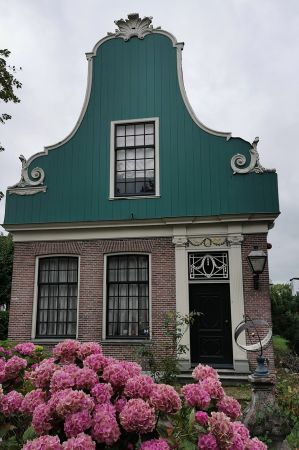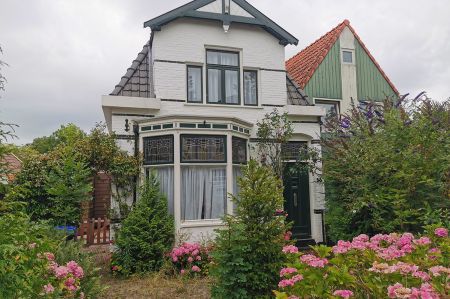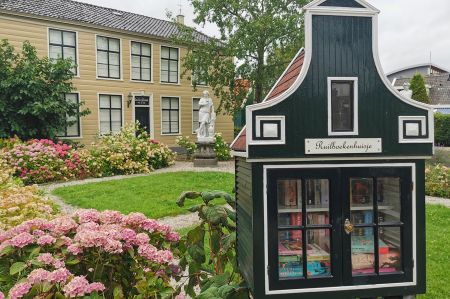Oud Zaandijk – attractive gables attract visitors
- Written by Portal Editor
It was actually only supposed to be a visit to the café with its own ice cream creations, discovered at the entrance to Oud Zaandijk, but then the conspicuously curved gables with their wooden panelling were so attractive that we extended the tour considerably.
According to local legend, it is said to have been Thursday, September 18, 1494, one day after Sint Lambert, when a certain Heyndrick Pieterz, who was always just called Oudt Heyn, approached the responsible dike officer and a Westzaan town councillor about the control of the dike whether he shouldn't be allowed to build a house on the dyke.
Zaandijk – first houses directly on the Zaan dike

Over time, more huts and sheds were built, a hamlet, or better yet, a fire-fighting pond was created, and finally a village emerged: Zaandijk, one of the few communities whose foundation is precisely known to this day.
Zaandijk, Oud Heyn and his sons

In the past more than 525 years, Zaandijk has developed into what it is today. The oldest part of the village lies along the Zaan at the Lagedijk. The wealthy Zaan families once lived here. This part of the village, called De Gortershoek or Gouden Bocht, has been a listed building since 1982. Here you will find the famous green Zaan wooden houses with curved facades, sturdy monumental merchant houses with beautiful gardens and romantic views of the Zaan.
Mills, factories and quays were located along the Zaan and in the Windswept Polder. Small wooden houses were mostly built on the ditches and paths that emerged on the other side of the river. Hardly any of that can be found. Please also read our article on Zaanse Schans.
Fascinated by the gables and gardens
However, it was arguably the housing shortage in the region, particularly in the first half of the last century, that forced the municipality to build hundreds of stone and concrete dwellings.
In the area that was once home to numerous windmills and wooden houses, several new-build neighbourhoods emerged between the Lagedijk and the railway: the Bredenhofbuurt (1910s), the Rode Buurt (1920s) and the Bomenbuurt (around the 1940s) and north of it Sluissloot, the Molenbuurt (1960s).
The latter neighbourhood is best known as "(Om) de Noord". Less interesting and so we quickly broke off our tour of the "new building district".
Around 1980 the last piece of “polder” also disappeared with the construction of 300 houses in “Plan Donker”, the last major housing project for almost a century. In 1974, despite the "Zendaik mot Zendaik blaive" protests, the Municipality of Zaandijk merged with the Municipality of Zaanstad. In all of Zaandijk, only around 8,500 villagers live in around 3,900 houses, of which around 3,000 people live in 1,600 houses in Oud Zaandijk (Alle digits.nl 2022).
Amazing: the village has more than 40 bridges in total, twenty of them in Oud Zaandijk.
Please read as well:
El Sebastinio - German-Turkish acrylic artist at the Grenzenlos
Open paddock at Schleizer Dreieck
-
-
-
-
-
-
-
-
-
https://www.alaturka.info/en/bicycle-travelling-e-bike-camping/6233-oud-zaandijk-attractive-gables-attract-visitors/amp#sigProId0d98720a92
